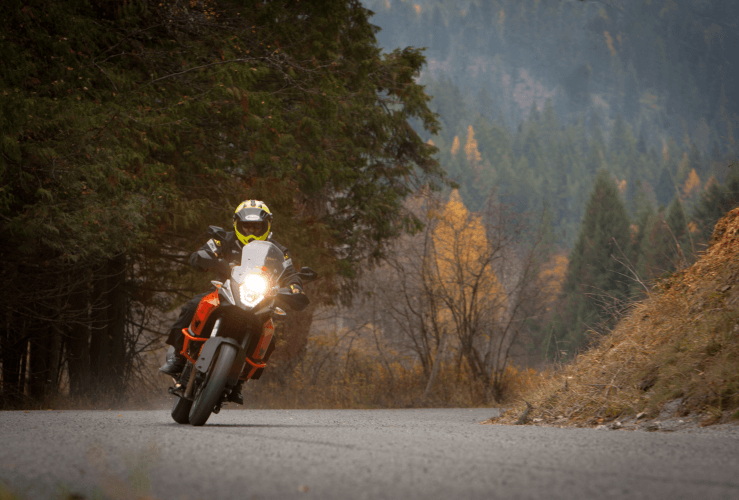Note: never take unnecessary risks when cornering on your motorbike - particularly if you're a beginner. The following tips are aimed at taking a corner in a safe yet efficient way. Never take a corner faster than you are comfortable with.

Cornering a motorcycle means you need to carefully position your feet, legs, bottom, arms, hands, shoulders, head and eyes.
Your feet need to be positioned so your inside foot does not get caught underneath the motorcycle, and your outside foot helps stabilise your entire body as you move through the turn.
Your foot needs to be in a position that allows your knee to be bent outwards, and then pulled in as necessary.
Your outside leg needs to be pressed firmly against the petrol tank. This leg, together with the outside foot, will support your entire body throughout the turn.
Your inside leg should be able to swivel freely towards the ground and back on the bike.
How much your bottom should hang off the bike (towards the inside of the turn) is debated among motorcycle experts, but it is usually somewhere between a quarter of the bottom and a half of the bottom. Don’t hang your bottom off the motorbike to the point that you lose stability; your bottom is another important contact point with the bike.
Your outside arm should be laying relaxed on top of the tank, while your inside arm should have its elbow pointed towards the ground. Try to keep both arms as relaxed as possible.
Your hands should be gripping the handlebars "as if you're wearing silk gloves" - that is, not too hard. Indeed, your body position (chiefly influenced by feet and legs) should enable you to remain supported on the bike to the point that you could take your hands off the handlebars during a turn.
Your shoulders and upper body should be angled in the direction you wish to go. You should aim to twist your upper body into the corner. Doing this will help you position your arms and hands.
Your head and eyes should also be angled in the direction of travel. Your eyes should be looking into the corner.
Summing up, you need to position your body so you are stable on the motorbike, and are able to shift the centre of gravity of both you and the machine. The more you shift your body towards the inside of a corner, the less you'll need to lean - however, this means you'll be less stable. It's important to achieve the right balance here and, for beginner motorcyclists, it's critical that no unnecessary risks are taken.
As you lean into a corner, you should use a certain amount of counter-steer - where you steer the handlebars in the opposite direction of the turn. For example, if you lean to the left, you should steer the handlebars to the right.
Whenever you take a corner, you should use the throttle smoothly, and know that you travel in the direction your eyes are looking.
To help maintain a stable position on your motorcycle, it's important to have strong legs and core muscles.




